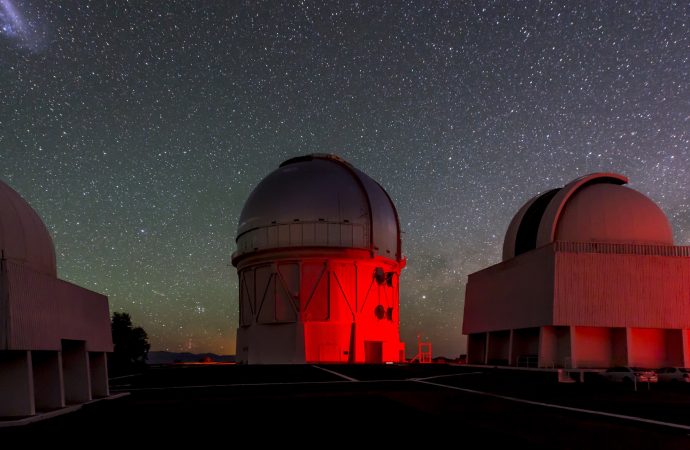The discoveries help boost scientists’ odds of finding the solar system’s putative Planet Nine.
Source: NBC News
The list of Pluto’s neighbors just got considerably longer, potentially boosting scientists’ odds of finding the putative Planet Nine.
Astronomers have discovered 139 more “minor planets” — small bodies circling the sun that are neither official planets nor comets — in the dark, frigid depths beyond Neptune’s orbit, a new study reports. The new additions represent nearly 5 percent of the current trans-Neptunian object (TNO) tally, which stands at about 3,000, the researchers said.
The scientists pored over data gathered by the Dark Energy Survey (DES) during its first four years of operation, from 2013 to 2017. The DES studies the heavens using the 520-megapixel Dark Energy Camera, which is mounted on the Blanco 4-meter telescope at the Cerro Tololo Inter-American Observatory in Chile.
As the project’s name implies, the main goal of the DES involves shedding light on dark energy, the mysterious force thought to be behind the universe’s accelerating expansion. But the high-resolution DES imagery has a number of other applications, including the discovery of small objects in our own solar system, as the new study shows.
The researchers started out with 7 billion DES-detected dots, which they whittled down to 22 million “transients” after ruling out objects such as galaxies that appeared in roughly the same spot on multiple nights. Those 22 million were further culled to 400 TNO candidates, whose movements the team was able to track over at least six different nights.
After months of vetting by analysis and observation, the team verified 316 of the small bodies as bona fide TNOs. These cataloged objects lie between 30 and 90 astronomical units (AU) from the sun, and 139 of them are new to science, the researchers said. (1 AU is the Earth-sun distance, which is about 93 million miles, or 150 million kilometers.)
The techniques the researchers developed could aid future TNO searches, including those potentially conducted by the Vera C. Rubin Observatory, which is scheduled to come online in the early 2020s, study team members said.
“Many of the programs we’ve developed can be easily applied to any other large datasets, such as what the Rubin Observatory will produce,” lead author Pedro Bernardinelli, a physics and astronomy graduate student at the University of Pennsylvania, said in a statement.
The team members are also now running their analyses on the DES’ entire six-year data set, an effort that could yield an additional 500 or so newfound TNOs. (The DES’ initial run wrapped up in 2019.) Such new additions could end up being bread crumbs that lead to Planet Nine, the hypothesized world that some scientists think lurks undiscovered in the far outer solar system, hundreds of AU from the sun.
Planet Nine’s existence, after all, is inferred from weird clustering in the orbits of certain TNOs.
“There are lots of ideas about giant planets that used to be in the solar system and aren’t there anymore, or planets that are far away and massive but too faint for us to have noticed yet,” study co-author Gary Bernstein, an astronomy and astrophysics professor at the University of Pennsylvania, said in the same statement.
“Making the catalog is the fun discovery part,” Bernstein added. “Then, when you create this resource, you can compare what you did find to what somebody’s theory said you should find.”
The new study was published this week in The Astrophysical Journal Supplement Series. You can read a preprint of it for free at arXiv.org.
Source: NBC News
































Leave a Comment
You must be logged in to post a comment.